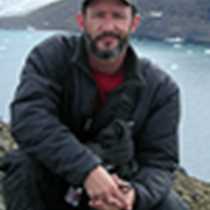Hells Canyon
The grandeur of the Snake River Canyon was enjoyed by all as we boarded powerful jetboats for an all day ride both south and north into North America’s deepest river gorge. After leaving the Sea Bird we moved south to witness the incredible layers of basalt both in their regular form and the more unique Columnar basalt. The area just south of Lewiston, Idaho has some of the best examples of this amazing cooling feature in the world. We continued on to see the abrupt change from the younger basalt (7 to 15 million years old) to the much older limestone’s, granites, and sandstones of the Hells Canyon National Recreation Area (250 to 300 million years old). The Snake River canyon then became narrower and steeper as the more resistant layers have been able to hold off the massive erosive affects of the river over the eons.
We learned of the human history of the canyon in terms of the mining, cattle and sheep ranching, and the homesteaders that lived in Hells Canyon over the last century and half. We also had sightings of the anticipated and hoped for rocky mountain big horn sheep, mule deer, osprey, western tanagers, and a pair of sharp eyes even spotted an elk across from our lunch stop at Hellers Bar.
After lunch we spent a little time looking at petroglyphs along the Idaho side of the river before returning to the ship. Some of us then traveled to the Nez Perce Reservation visitors center to see the Spaulding collection of Native American art.
The grandeur of the Snake River Canyon was enjoyed by all as we boarded powerful jetboats for an all day ride both south and north into North America’s deepest river gorge. After leaving the Sea Bird we moved south to witness the incredible layers of basalt both in their regular form and the more unique Columnar basalt. The area just south of Lewiston, Idaho has some of the best examples of this amazing cooling feature in the world. We continued on to see the abrupt change from the younger basalt (7 to 15 million years old) to the much older limestone’s, granites, and sandstones of the Hells Canyon National Recreation Area (250 to 300 million years old). The Snake River canyon then became narrower and steeper as the more resistant layers have been able to hold off the massive erosive affects of the river over the eons.
We learned of the human history of the canyon in terms of the mining, cattle and sheep ranching, and the homesteaders that lived in Hells Canyon over the last century and half. We also had sightings of the anticipated and hoped for rocky mountain big horn sheep, mule deer, osprey, western tanagers, and a pair of sharp eyes even spotted an elk across from our lunch stop at Hellers Bar.
After lunch we spent a little time looking at petroglyphs along the Idaho side of the river before returning to the ship. Some of us then traveled to the Nez Perce Reservation visitors center to see the Spaulding collection of Native American art.




